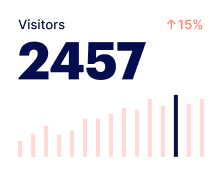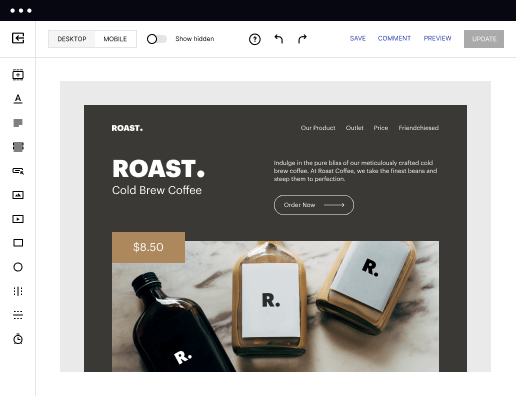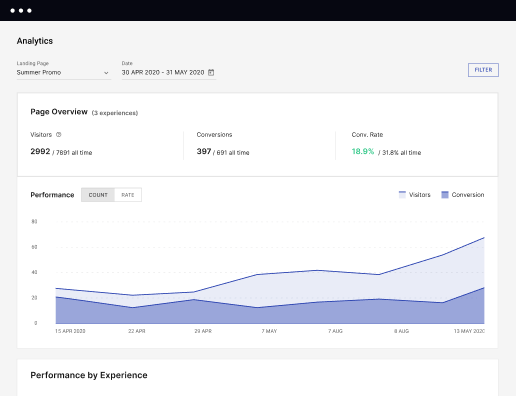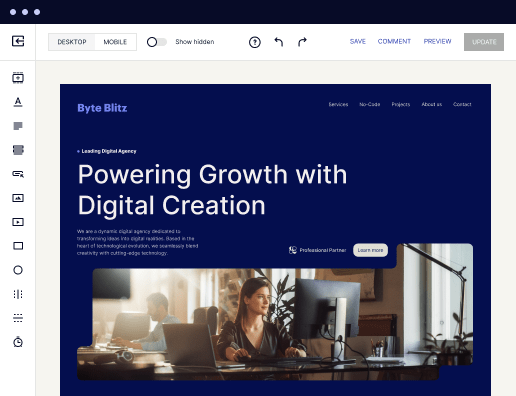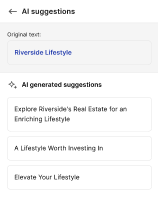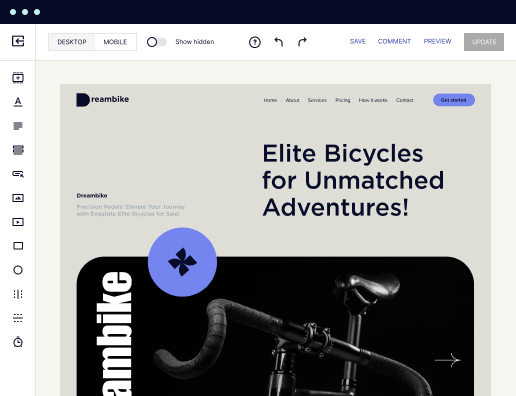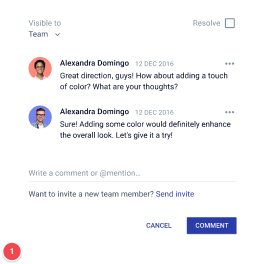Make your returns page designed for macOS
Instapage empowers you to reduce costs, increase conversions, and deliver meaningful experiences on macOS.
Build your returns page on macOS with Instapage
Creating a returns page on macOS is essential for ensuring a smooth transaction experience for customers. With Instapage, marketers can easily design high-conversion landing pages tailored to enhance brand trust and customer loyalty. This guide will walk you through the process of building a returns page optimized for performance, even without the need for coding.
Getting started with Instapage
To begin, log into your Instapage account and navigate to the page creation feature. Instapage offers a selection of over 100 conversion-focused layouts, allowing you to choose a design that aligns with your brand. No coding knowledge is required, making it accessible for everyone in the marketing team. The drag-and-drop functionality simplifies the setup, giving marketers the flexibility they need.
- Choose a layout: Select a design template focused on returns that resonates with your brand’s aesthetic.
- Customize your content: Use Instablocks to add elements like forms, testimonials, and visuals that enhance customer understanding.
- Preview and test: Always preview your page to ensure it displays correctly across devices before publishing.
Optimizing for conversions
Once your returns page design is in place, focus on optimization. Instapage provides built-in experimentation tools that enable you to test various elements for effectiveness.
- Implement A/B testing: Evaluate different headlines or calls-to-action to see which performs better for your audience.
- Utilize heatmaps: Gain insights into how users engage with your content, allowing for tailored adjustments.
- Analyze performance: Leverage the analytics dashboard to monitor conversion rates and make data-driven improvements.
Personalizing the user experience
To truly engage your audience, personalization is key. Instapage allows you to customize content dynamically to meet the specific preferences of visitors based on their data.
- Dynamic text replacement: Personalize headlines based on the user's entry point or campaign source.
- AdMaps: Align specific ads with relevant landing pages to improve coherence and user experience.
- Metric tracking: Use data tools to evaluate the performance of personalized content and refine strategies accordingly.
After implementing these strategies, your returns page will not only provide crucial information but will also enhance customer confidence and loyalty by offering a seamless experience.
By following these steps, you can build a highly effective returns page that supports your marketing objectives.
Ready to create your returns page on macOS with ease? Start using Instapage today and unlock the power of personalized, conversion-driven landing pages!
Get more out of Build your returns page on macOS
Improve your Quality Score with quick load technology for landing pages
Increase conversions with content that aligns with your ads and audiences
Achieve maximum ROI by scaling your marketing initiatives
Leading the way in building high-performing landing pages





FAQs
Ready to skyrocket conversions?
Supercharge your ad campaigns with high-performing landing pages.
Get started
